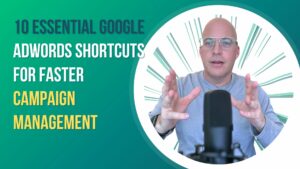A solid online presence has become essential for businesses of all sizes. But with millions of websites vying for attention from potential customers, it cannot be easy to get noticed in search engine results. At its core, SEO is optimizing websites to improve visibility and ranking on search engines like Google, Bing, and Yahoo. SEO strategies and techniques make businesses appear higher on search engine results pages (SERPs).
But Why is SEO so Important for Businesses?
The answer is simple – it can help increase website traffic and ultimately lead to more customers. When a user searches for a product or service related to your business and your website appears at the top of the SERP, you’re more likely to gain their attention and generate clicks.
And when users consistently see your brand at the top of SERPs for relevant keywords over time, it can increase brand recognition and trust. The benefits of leveraging SEO strategies don’t stop there – improved online visibility also means increased credibility within your industry.
When potential customers see your business consistently, they’re more likely to view you as an authority in your field. This credibility can ultimately lead to increased conversions and revenue.
SEO is about improving visibility and driving traffic through organic search engine results. You can increase brand recognition and generate more leads and conversions by implementing effective SEO strategies tailored to your business’s needs.
Understanding Search Engines and Keywords
The backbone of SEO is understanding how search engines work. Search engines use complex algorithms to index and rank websites.
These algorithms consider various factors, including keyword relevance, website structure, backlinks, and user behavior. The ultimate of these algorithms is to provide users with relevant and valuable results for queries.
Keywords play a role in helping search engines understand what your website is about. A keyword is a word or phrase people use when searching for something online.
For example, if you’re a bakery in New York City, some relevant keywords might be “best bakeries in NYC” or “cupcake delivery NYC.” By including these keywords on your website, signal search engines that the site is relevant to those search queries.
Choosing the right keywords for your business can be tricky. You want to select keywords that accurately represent what your company does while being famous enough that people are searching for them.
One way to find potential keywords is using tools like Google Keyword Planner or Moz’s Keyword Explorer. These tools allow you to see how many people search for specific terms each month and how competitive those terms are.
Once you have a list of potential keywords, it’s important to prioritize them based on relevance and competition level. You want to focus on the most relevant keywords with the highest search volume while choosing less competitive long-tail keywords to help you rank more easily for specific niches within your industry.
Understanding how search engines work and choosing keywords are foundational to successful SEO strategies. Optimize the website to rank higher in search engine results pages. It leads to increased traffic and, ultimately, more business growth!
On-Page Optimization
It refers to the SEO strategies you use on your website pages to make them more appealing and accessible for search engines to understand. Essentially, it’s about ensuring your website pages are fully optimized for users and search engines. An important aspect of on-page optimization is ensuring your site has high-quality content. You want your site to have content that’s not only informative but also engaging and interesting.
It should be relevant to the target audience, answer their questions, and provide them with value. Optimizing Page Titles, Meta Descriptions, Headers, and Content When it comes to optimizing individual pages on your website, there are a few key areas you should focus on. One of the most critical elements is the page title. When someone visits your webpage, this appears at the top of a browser tab. The title should accurately describe what’s on the page in a few words (less than 70 characters).
Meta Descriptions
Another element important for optimizing webpages is meta descriptions; these appear under the title tag in search engine results pages (SERPs). Searchers use them as a quick snapshot of what they can expect from clicking through to your webpage. Google doesn’t use them for SEO, but they show on the results page, so it is your best chance to convince them to click on your link.
Headers also play an essential role in on-page optimization; they break up content into smaller sections and make it easier for readers to digest information. Make sure all headers contain relevant keywords or phrases where possible.
Content
When optimizing individual web pages within a website, content is one of the most essential elements. This includes text-based copy and images or videos that help convey ideas or concepts more clearly. On-page optimization forms an integral part of any successful SEO strategy. Creating high-quality content while paying attention to page titles, meta descriptions, headers & keyword optimization can significantly improve your website’s search engine rankings, user engagement, and overall performance.
Off-Page SEO
Off-page optimization is a part of SEO that works outside of your website. These are techniques used to improve your website’s ranking and visibility on search engines. By using off-page optimization techniques, you can increase your website’s popularity, credibility, and relevance to search engines.
1. Link Building
Link building is a popular off-page optimization technique involving creating links from other websites to your own.
These links are known as backlinks and play a role in search engine rankings. The more backlinks you have from other reputable websites in your niche, the more credible and authoritative your website appears to search engines like Google.
2. Social Media
Social media marketing is another off-page optimization technique that can help you get more traffic to your website. Facebook, Twitter, LinkedIn, and Instagram allow businesses to connect with their target audience directly.
By sharing engaging content on these platforms regularly, you can attract more followers who may visit your website. Local citations are also an essential part of off-page optimization for local businesses.
3. Citations
Citation adds business name, address, and phone number on other websites or directories like Yelp or Yellow Pages. Local authorities help improve the visibility of a local business on Google Maps searches.
4. Off-page Optimization
Off-page optimization involves optimizing elements outside the web page, whereas On-Page Optimization focuses exclusively on optimizing individual pages within the site structure. Link building is a component of any effective link-building campaign. It helps establish authority through reputable sources by increasing backlinks from high-quality websites within the same industry or niche.

Technical Optimization: The Backbone of Your SEO Strategy
Website Speed: A Factor for Success
Website speed is a factor in determining how a site ranks in result pages (SERPs). Google has repeatedly stated that page speed is a ranking factor. Additionally, user experience research has shown that page load times directly impact user satisfaction and conversion rates. Identify issues with slow-loading pages or large file sizes to optimize the website’s speed. You can use tools to get detailed insights into the performance of each page on your site. Once you’ve identified any issues, take steps to optimize images and reduce file sizes. This might include compressing images or using lazy loading techniques to only load them as needed.
Mobile Responsiveness: Meeting the Needs of Mobile Users
With more than half of all web traffic from mobile devices, the website must be optimized for mobile users. Responsive design that adjusts to fit various screen sizes and pays attention to usability factors such as font size and clickable elements. To optimize your site for mobile users, test its performance across different devices using tools like Google’s Mobile-Friendly Test. If you identify any issues with usability or responsiveness, work with a web developer to make the necessary changes.
Site Architecture: Making Your Site Easy-to-Crawl
Search engines rely on algorithms known as spiders or crawlers to index and rank websites. Paying attention to your site’s architecture structure is essential to ensure your site is being crawled effectively. Start by organizing your content into logical categories and using clear, descriptive labels for each page.
Use internal linking to help guide crawlers through your site and ensure all pages are accessible through a straightforward navigation structure. Additionally, create an XML sitemap that lists all pages on your site to make it easy for crawlers to find new content.
By optimizing these technical factors, you’ll be setting a solid foundation for the rest of your SEO strategies effort. By ensuring that both search engines and users can easily navigate and access the content on your site, you’ll be well on your way to achieving long-term success.
Tools
If you’re unfamiliar with Google Analytics, it’s a tool that provides insights into your website’s traffic and user behavior. Setting up Google Analytics on your website is pretty straightforward – all you need to do is create an account, add a tracking code to your site, and voila! You’ll start receiving valuable information about your website visitors.
Metrics
Metrics such as traffic, bounce rate, and conversions can help understand how a website performs. Traffic refers to the number of visitors coming to your site over a specific period.
Analyzing traffic data lets you see how many people visit your site and which pages they view. However, it’s not enough to just track traffic; you need to understand how engaged these users are when they arrive on your site.
1. Bounce
This is where bounce rate comes in – the percentage of visitors who leave immediately after landing on a page without clicking through or interacting with any other content on the site. A high bounce rate suggests that users aren’t finding what they’re looking for or that something about the page isn’t appealing.
2. Conversions
Conversions refer to how well users complete desired actions on your website, such as purchasing or filling out a form. Measure the effectiveness of different elements, such as call-to-actions (CTAs) and landing pages.
Tracking metrics such as traffic, bounce rate, and conversions using tools like Google Analytics can provide valuable insights. By analyzing this data regularly and making informed decisions based on these insights, businesses can optimize their websites for better visibility and growth in search engines.
Staying Up-to-date with Algorithm Changes
Search engines like Google continuously adjust their algorithms. This means that what works for SEO strategies today may not work tomorrow. It’s essential, therefore, to always stay up-to-date with the latest algorithm changes and update your SEO strategies accordingly. Search engine algorithms change over time due to advancements and user behavior. For example, recent updates have been made to prioritize mobile-first indexing to reflect that people use mobile devices for web browsing more than desktops or laptops.
Tips on Staying Up-to-Date with Changes
To stay on top of algorithm changes, you should regularly read news articles and updates about SEO trends and techniques. Subscribe to reputable blogs and newsletters from industry leaders such as Moz or Search Engine Journal. Attending industry conferences is also a great way to network with other professionals and learn about upcoming changes. It’s also essential to be willing to adapt your SEO strategy when necessary. If a significant algorithm update negatively impacts your website traffic, take a step back and analyze why this happened. Did you engage in any black hat tactics? Were you optimizing for irrelevant keywords? Take corrective action and adjust your strategy based on the latest best practices.

Taking Your Business to the Top with SEO
We’ve provided a step-by-step approach to leveraging SEO strategies for business growth. We started by explaining the importance of understanding search engines and keywords before moving on to on-page optimization techniques such as optimizing page titles, headers, and content.
Then moved on to off-page optimization techniques like link building and social media marketing before diving into technical optimization factors like website speed and mobile responsiveness. We discussed the importance of tracking your website’s performance using tools like Google Analytics so that you can measure success based on metrics such as traffic, bounce rate, and conversions.
And finally, we provided tips on staying up-to-date with algorithm changes so you can continue to improve your SEO efforts over time. By implementing these strategies consistently over time, you’ll be able to take your business to the top of search engine rankings – driving more traffic, leads, and sales for your brand.
So what are you waiting for? Start implementing these SEO best practices today!








